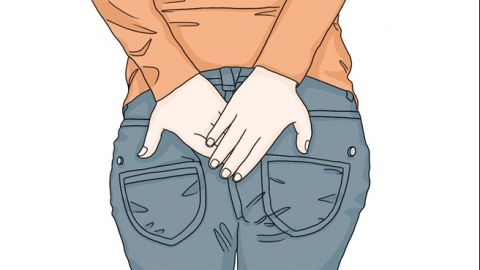How to eliminate external hemorrhoids and anal skin tags
Generally, external hemorrhoidal skin tags may be caused by prolonged sitting or standing, poor dietary habits, varicose veins, perianal inflammation, increased intra-abdominal pressure, and other factors. Treatment options include general therapy and medication, under a doctor's guidance. Detailed explanations are as follows:

1. Prolonged sitting or standing, lack of exercise
Long periods of sitting or standing without movement can impair blood circulation around the anus and hinder venous return, thereby increasing the risk of external hemorrhoids. It is recommended to engage in appropriate physical activities regularly, such as anal lifting exercises, to strengthen the muscles around the anus and promote local blood circulation. Also, avoid prolonged sitting or standing, and get up and move around periodically.
2. Poor dietary habits
Long-term consumption of spicy and greasy foods, along with insufficient intake of dietary fiber, can easily lead to constipation, which is one of the key factors contributing to the formation of hemorrhoids. Excessive straining during bowel movements increases abdominal pressure, affects perianal blood circulation, and promotes the formation of external hemorrhoidal skin tags. Maintain a light diet and consume more fiber-rich foods such as fruits, vegetables, and whole grains to enhance intestinal motility and alleviate constipation. At the same time, avoid eating spicy and irritating foods like chili peppers and Sichuan peppercorns.
3. Perianal varicose veins
Perianal varicose veins are usually triggered by factors such as constipation, pregnancy, and intra-abdominal tumors, causing the veins around the anus to gradually dilate and twist under pressure. This results in a mass of varicose veins known as an external hemorrhoidal skin tag. Symptoms may include a feeling of heaviness or itching in the anal area. Follow medical advice to use medications such as Ma Ying Long Musk Hemorrhoid Ointment, Gang Tai Ointment, and Compound Carrageenan Cream for treatment.
4. Perianal abscess
A perianal abscess may develop due to inflammation around the anus, where inflammatory factors stimulate local tissue proliferation, forming connective tissue hemorrhoids, which manifest as external hemorrhoidal skin tags. Accompanying symptoms may include perianal pain, abscess formation, and itching. Under a doctor's guidance, medications such as erythromycin ointment, cefixime capsules, and amoxicillin capsules can be used for treatment.
5. Increased intra-abdominal pressure
Causes of elevated intra-abdominal pressure may include obesity, ascites, multiple pregnancies, and childbirth. Prolonged elevation of intra-abdominal pressure affects perianal blood circulation, leading to varicose veins and inflammatory responses in the anal area, which can progress into external hemorrhoids. Symptoms such as abdominal discomfort and difficulty defecating may also appear. Under a doctor's recommendation, medications such as Sophora japonica fruit pills, Zhisuning tablets for hemorrhoids, and potassium permanganate topical tablets can be used for treatment.
To prevent this condition, it is recommended to engage in appropriate physical exercise in daily life and avoid prolonged sitting or standing. At the same time, adjust your diet, eat more fiber-rich foods, and avoid consuming spicy and irritating foods.





